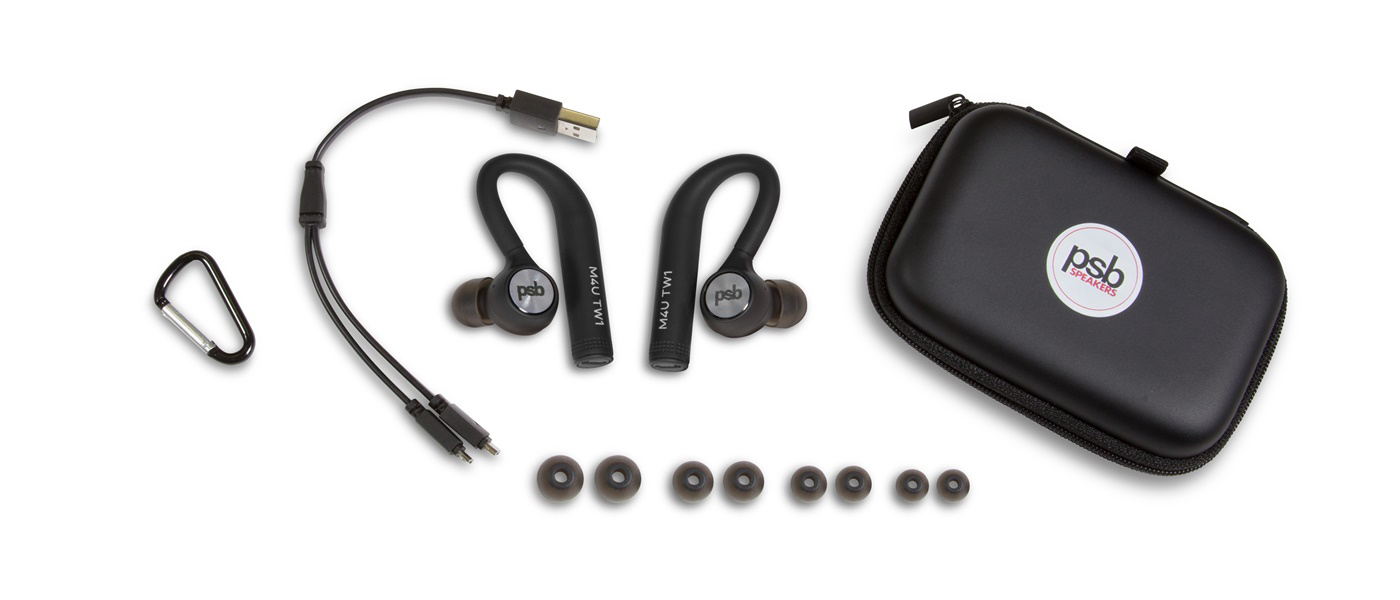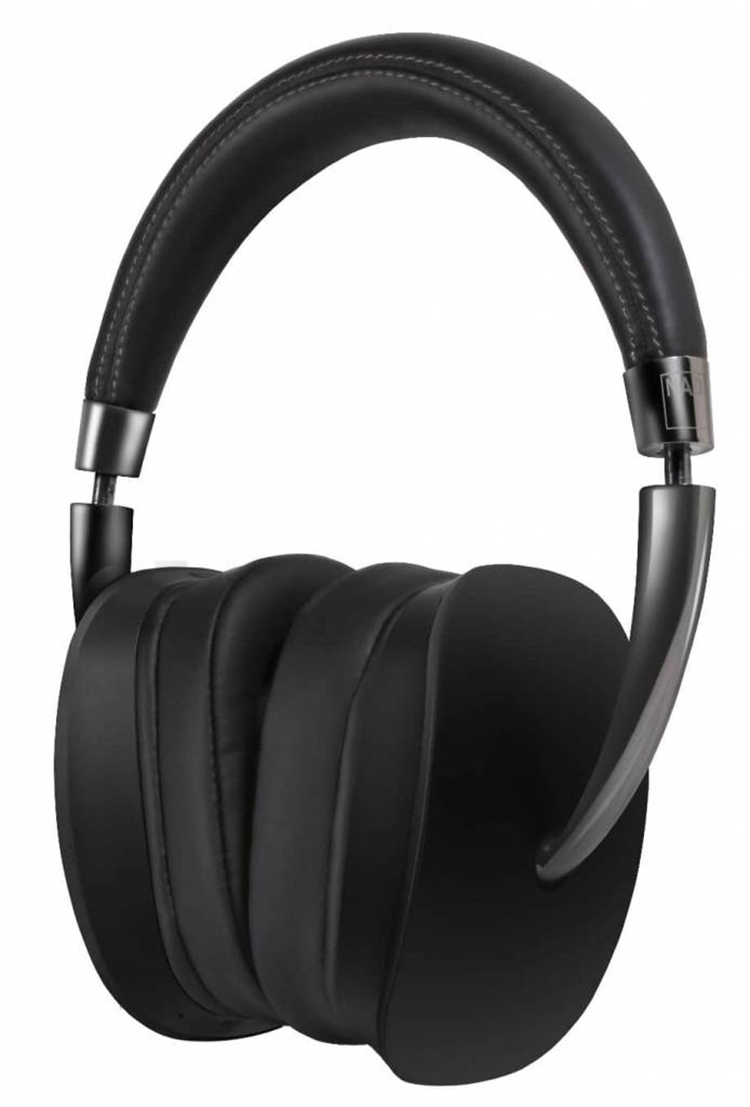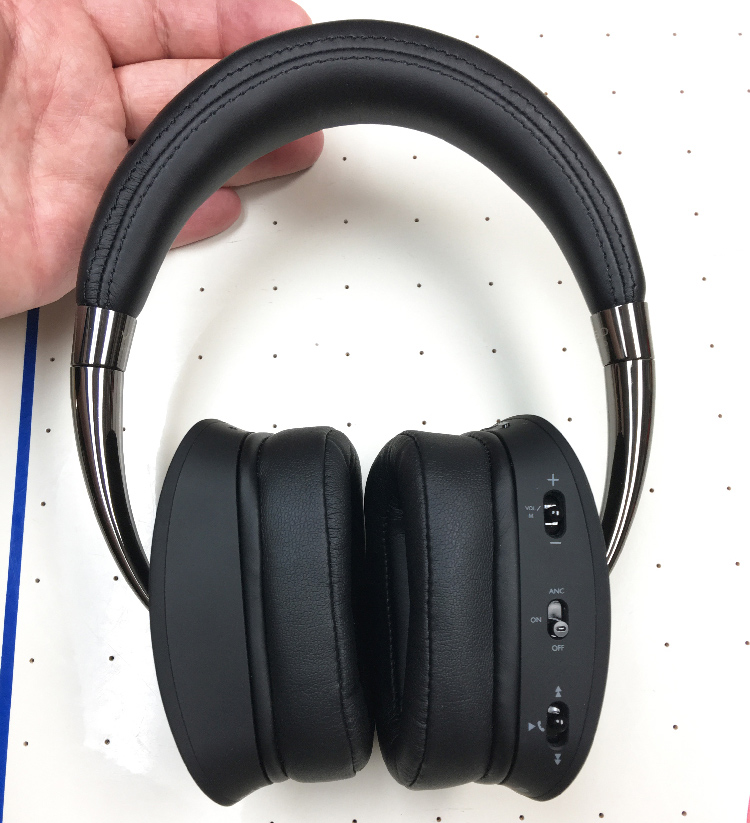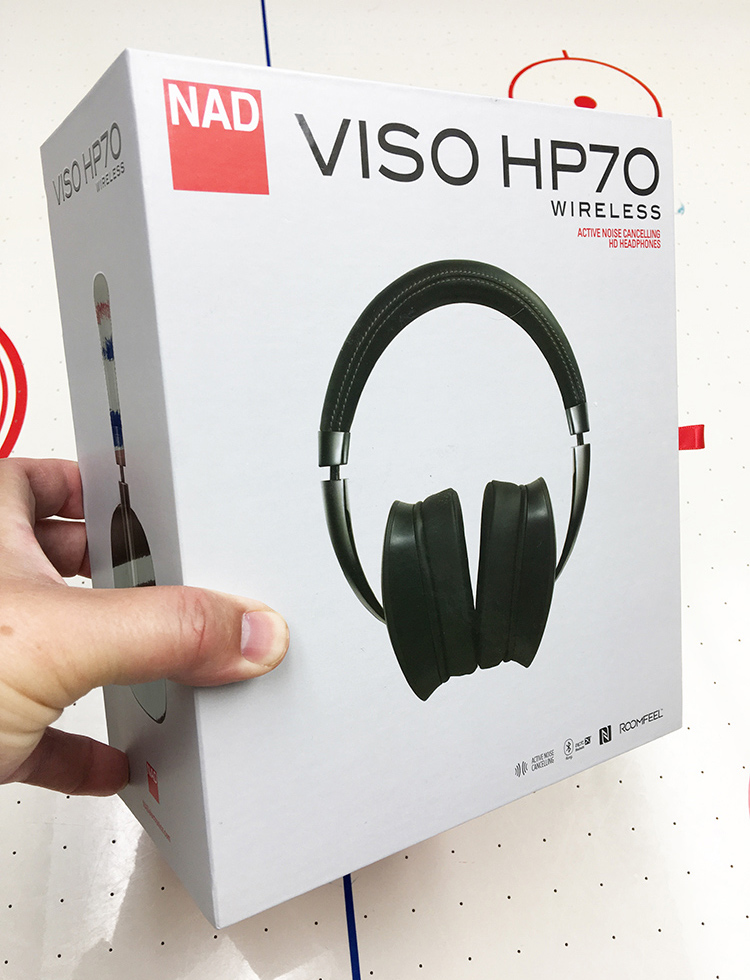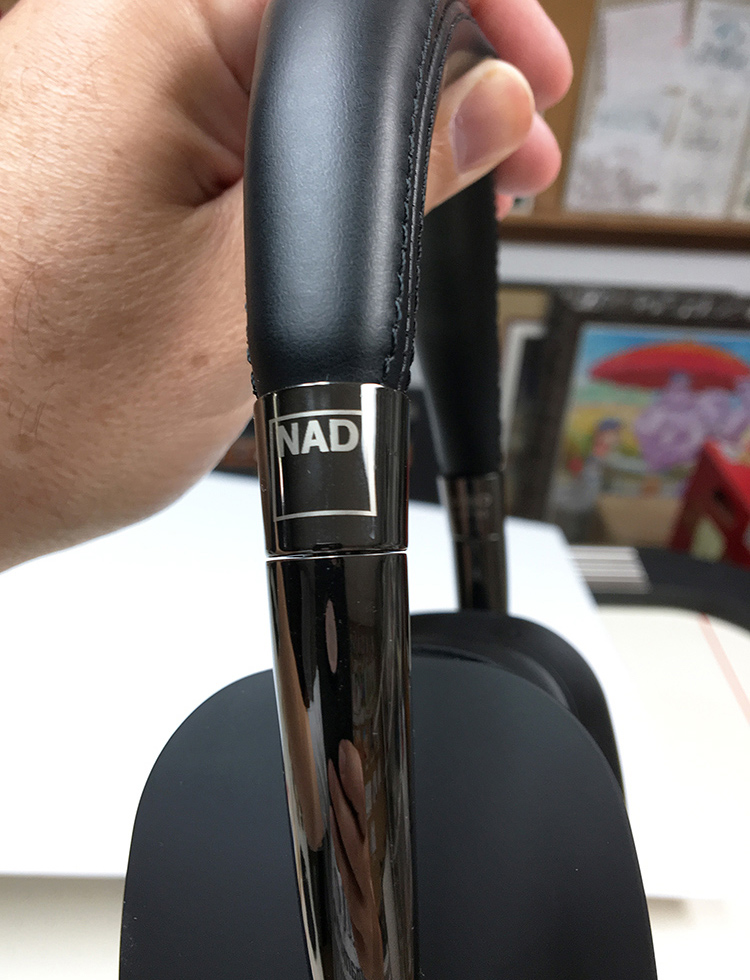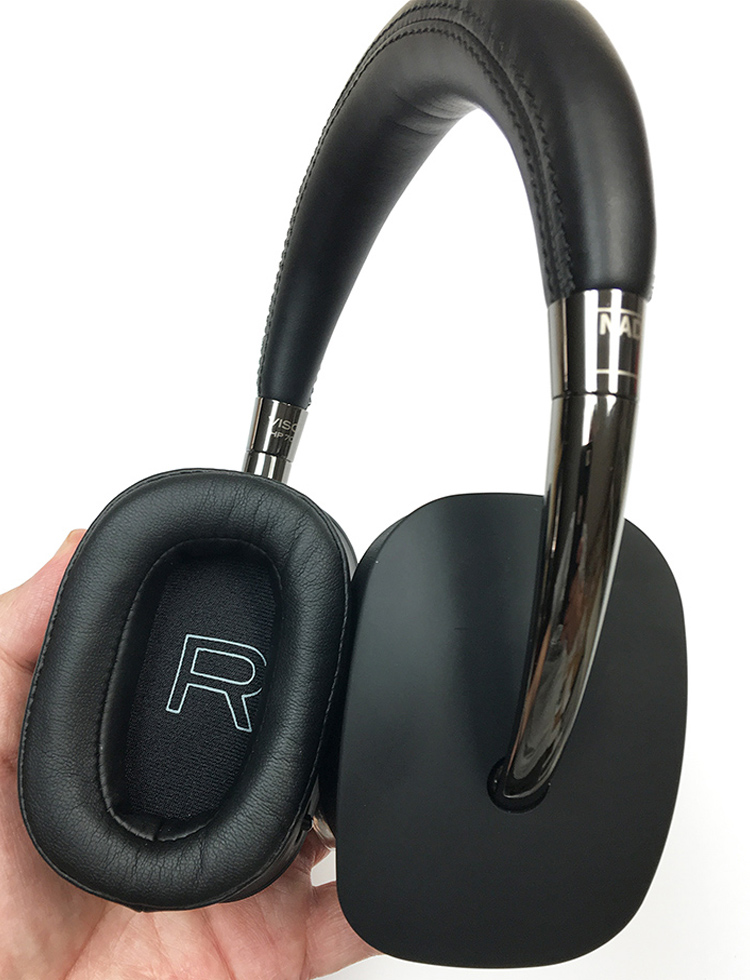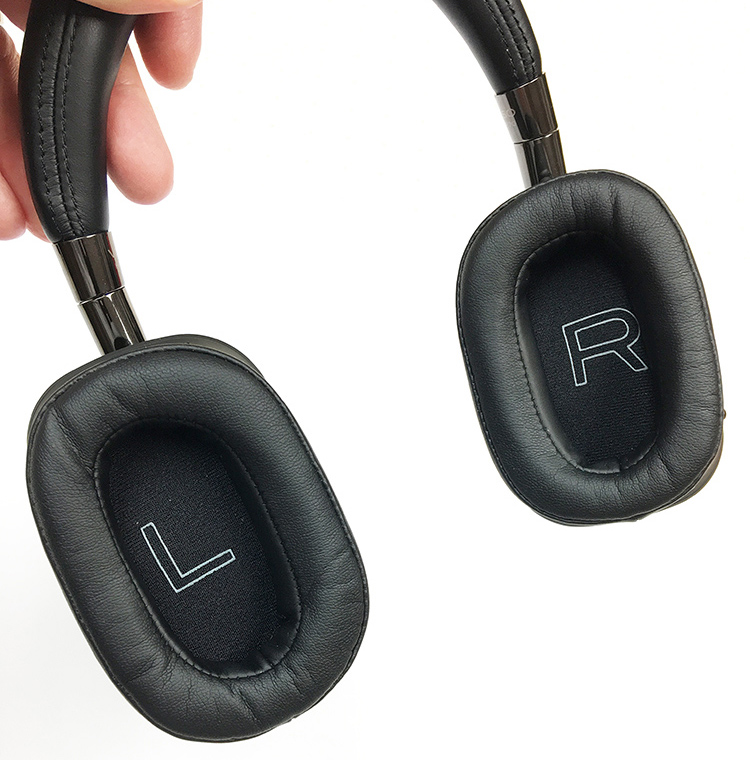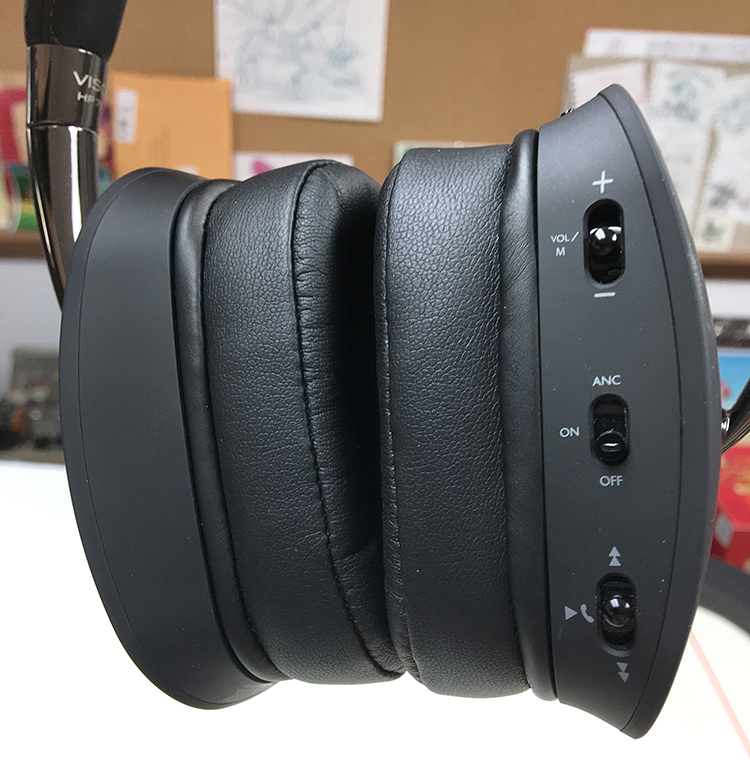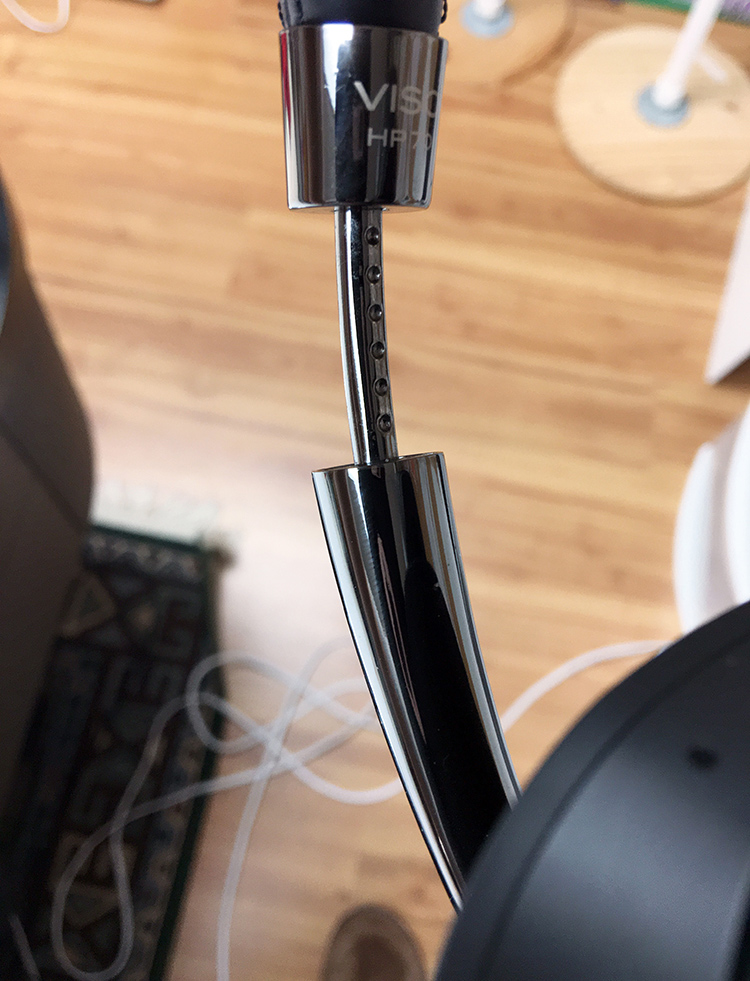Since both NAD and PSB are under the umbrella of The Lenbrook Group of companies, they have at times leveraged each other’s know-how to help advance the performance of both brand’s products. This has been most clearly seen in both the headphone and earphone offerings from each company over the last few years. PSB’s Paul Barton developed the NAD VISO HP70 alongside its PSB sibling, so many of the technical highlights will be shared between the two.
NAD VISO HP70 Wireless Noise Cancelling Headphone
- RoomFeel technology helps give the impression that you are listening to high quality speakers in a well treated room.
- Effective Active Noise Cancellation system.
- Can be connected via Bluetooth, analog wired, or USB.
- AptX HD Bluetooth codec for supported devices and AAC codec for iOS devices.
- Very modern, almost Scandinavian design aesthetic.
- Good quality construction.
- Comfortable fit.
- 15 hour running time on a full charge.
It’s going to come as no surprise, due to the shared internal components and tuning, that the NAD VISO HP70 has a very similar sound signature to the previously reviewed PSB M4U 8 wireless headphones. What is interesting though is that the wildly different external designs will appeal to different people on both an aesthetic and ergonomic level. Factoring in those personal preferences, one may well be a better choice than the other for a given customer and their usage pattern.
In any event, I waxed poetic about the virtues of RoomFeel tuning in the earlier PSB review so its application in the NAD VISO HP70 should be a signal that an equally good sonic performance is on the way.
Design:
Closed-back Headphones with Dynamic Drivers
Driver Size:
40.0 mm
Manufacturer Freq. Response:
20 Hz – 20 kHz +\- 1.5 dB
Bluetooth Codecs Supported:
SBC, AptX, AptX HD, AAC
Nominal Impedance:
32 Ohms
Weight:
320 grams (11.3 ounces)
Available Colors:
Black with polished metal accents
Accessories:
One detachable 1.5-meter (59.0-inch) headphone ribbon cable with 3.5mm plug, one 1.5-meter (59.0-inch) USB cable, one ¼-inch Phono plug adapter, one dual-prong airline adaptor, one travel clip, carrying case
MSRP:
$399.00 USA
Company:
SECRETS Tags:
NAD, VISO, RoomFeel, Wireless, Bluetooth, ANC, AptX., Noise Cancelling Headphone Reviews 2018
From a design standpoint the NAD VISO HP70 share the same aesthetic as the VISO HP50 wired headphones that I reviewed a few years back. They have that clean, European minimalist look going on that helps them stand out from the crowd.
The headband has a modest round diameter and is covered with a soft stitched black leatherette. The headband’s shape tapers to almost a point as it gets to the ear cups. The materials also change from the leatherette to polished metal where the headband transitions to the adjustment points. The adjustment arms extend and retract with a series of satisfying clicks and they allow the ear cups to rotate a full 90-degrees towards you. The ear cups are made of a matte black plastic and have an unusual rectangular shape, albeit with rounded corners. The ear pads are fairly thick and soft, and they are covered in the same soft black leatherette as the headband. Inside the ear cups, a large L and R are printed in white on the fabric layer that covers the respective drivers. You’ll have no excuse to ever put these headphones on backwards!
All controls are segregated to the right ear cup. From top to bottom the controls are: Bluetooth pairing button, Volume Up/Down/Push to listen through, Power and Active Noise Cancellation On/Off, Track Forward/Back/Push to Pause-Answer Phone. At the bottom of the right earcup is the micro USB port for charging or to connect directly to a computer’s USB port. When connected to a computer via USB, the VISO HP70 will be treated as an external sound card by the computer’s operating system. And finally, there is the analog wired connection next to the USB port.

NAD VISO HP70 Bottom View
The NAD VISO HP70 are powered by an internal rechargeable 3.7 Volt 600 mAh battery that is not user replaceable. The headphones take about 4 hours to fully charge and have a running time of about 15 hours until depleted.
From a technical standpoint, these are closed back headphones using the same 40mm dynamic drivers as the PSB M4U 8. They can be listened to in a purely passive mode (wired like traditional headphones), in active mode with onboard amplification (both wired and wireless), and active mode with noise cancellation (both wired and wireless). In any of the active modes of listening, the NAD VISO HP70 take advantage of Paul Barton’s RoomFeel technology.
RoomFeel is a type of tuning that allows the headphones to mimic the power response of a flat-measuring pair of full-range speakers, properly set up, in a well-treated room. As headphones at large are available in a variety of different tunings, as decided on by each respective manufacturer, the RoomFeel methodology makes a good deal of sense in that almost all the music we listen to, has been mixed and mastered using speakers in the studio as a reference. Headphone listening is, in most cases, an afterthought in the music production process. So, trying to recreate the sound of textbook full-range speakers, performing at their best in a perfected environment, heard through your headphones, seems to be a reasonable goal to shoot for.
The research that eventually led to RoomFeel was begun in the mid-1970s at Canada’s National Research Council. At that time work was being done in they study of human hearing with an eye to improving designs and technology for medical hearing aids. PSB’s Paul Barton, who was involved in the research, saw that the information that was learned could also perhaps be applied to improving headphone design and performance. Several years, and many more hours of testing and research later, RoomFeel emerged as a prime feature on a number of PSB and NAD personal audio products.
The NAD VISO HP70 are equipped with Qualcomm’s newest iteration of it’s AptX Bluetooth wireless protocol, AptX HD. AptX HD is claimed to be able to transmit at up to a 24 bit/48 kHz resolution for more faithful High Definition music file playback. Standard AptX is billed as delivering “near CD quality” playback. AptX HD is backwards compatible with regular AptX and as of this writing, there are a handful of smartphones and DAPs that support AptX HD transmission. The headphones are also fully compatible with the AAC Bluetooth codec that iOS devices use.

NAD VISO HP70 with Accessories
Accessories that come with the NAD VISO HP70 include a soft carrying case, a traditional headphone cable with 3.5mm connectors on both ends, a ¼-inch Phono adapter, a dual prong airline adapter, a micro USB charge cable and a travel clip.
For this review, the NAD VISO HP70 headphones were primarily paired with my iPhone 6S Plus, my Microsoft Surface Pro 3 tablet and a Shanling M0 DAP. Connection was made using Bluetooth wireless and both traditional wired and USB connection where appropriate. My iPhone uses the AAC Bluetooth codec while the Shanling DAP has standard AptX, AAC, LDAC and LDAC HD codecs at its disposal. I could not get a bead on what Bluetooth codec the Surface tablet was using unfortunately.
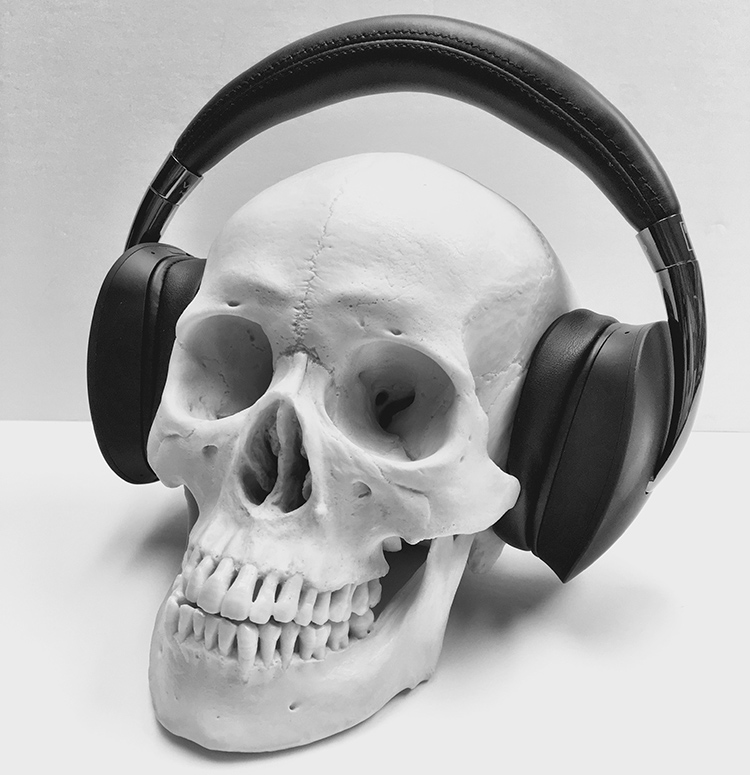
NAD VISO HP70 being worn by reviewer
The NAD VISO HP70 certainly looks different from its sister PSB headphone and, to a large extent, felt different when I wore them for any length of time. The HP70 had noticeably less clamping force than the PSB M4U 8 which made them a little easier to keep on for extended periods. The ear pads also felt a little more comfortable around my ears, at first. As the weeks passed however, that impression tended to even out between the two headphones as the PSB’s thicker and firmer ear pads broke in a bit. And while the NAD headphones felt mostly secure on my head, the more rounded profile of the headband allowed them to jostle a little bit during stints of jogging or running. This meant more readjusting was required over the PSB headphones for these types of activities. Otherwise, I suspect that people with larger heads might have an easier time getting a comfortable fit with NAD VISO HP70 than the PSB due to their level of extension, ear pad size and the lower clamping force.
In general, I found the NAD VISO HP70 a very good sounding and reliable partner to use on a daily basis. As both the NAD and PSB headphones share essentially the same technical “guts”, they operated and sounded almost identical to each other. Bluetooth pairing with both my iPhone and Surface tablet was a simple matter. And once the initial pairing had been done, the headphones would automatically pair back up with whatever of the two devices it found active and available when powered back on. When I initially began this review, I didn’t have any AptX or AptX HD audio devices to pair with the headphones. I consulted Paul Barton and he confirmed that, for iOS devices, the NAD VISO HP70 headphones would use the Advanced Audio Coding (AAC) Bluetooth codec versus the more utilitarian SBC codec to achieve the best sound quality. AAC transmits at about 256 kbps and is reputed to be an efficient and generally good sounding codec, especially if your digital music library was created or resides in the Apple ecosystem. Overall sound quality was very good from both my devices via Bluetooth. Everything sounded clear with no breakup or static of any sort. I felt that bass with the NAD was just as good as their PSB counterpart. It didn’t sound bloated or overly goosed in level but just as deep and powerful and you definately felt it. The midrange frequencies were also reproduced very well, with vocals having a particularily good amount of clarity and presence. While I did feel that the area where the midrange transitioned into the upper bass sounded a little thick at times with the M4U 8, the NAD did not exhibit this similar trait with any of the music I tried. This behavior might very well be something that could be chalked up to sample variation or even how the driver interacts with the interior of the ear pads. High frequency performance seemed well up to scratch. I noticed no signs of softness or premature roll off in the treble area. All the telltale traits that I look for in the sounds of cymbals and horns were there. The lovely little shimmering details that you hear when triangles or flute are played were also all there. Massed strings especially sounded convincing, with plenty of detail and just the right “edge” to them.
About a couple of weeks into my testing I got the Shanling M0 micro-sized DAP and it had standard AptX Bluetooth to use with wireless devices like the M4U 8. AptX claims to transmit at “close to CD quality sound” with 16 bit/44.1 kHz resolution using a 4:1 compression ratio at 352 kbps (AptX-HD can move up to 24 bit/48 kHz, with the same compression ratio, at 576 kbps). Subjectively, I felt that I got a slightly better sounding combination with the VISO HP70 and the Shanling DAP versus using my iPhone. Obviously, using the analog wire connection and the headphones in active mode provided the best and most detailed audio experience. Bluetooth was a very close second but, in wired-active mode, I noticed a bit more clarity in the sound overall. Whether or not using a DAP with AptX HD Bluetooth on board would narrow the gap further I could not say. Whenever you do use the wire with the NAD headphones, I highly recommend you put them in active mode. You can listen to them in wired-passive mode in a pinch, but you will lose the advantage of the RoomFeel tuning, as that only works in the active modes, and it makes a significant difference in sound quality. Personally, I wouldn’t want to be without it. RoomFeel tuning particularly made the bass performance seem more like my home reference speakers, deep and impactful.
The Active Noise Cancellation (ANC) feature of these headphones operated the same and proved just as effective as the PSB version. It turns on or off with just the flick of a switch and, while it doesn’t have any adjustability for strength, I found it to be completely effective in the various situations that I tried it. It worked especially well when I was on a recent plane fight to the Munich High End Show. The ANC system was more than up to the task of filtering out the engine noise on the over 7-hour flight there. Also, the associated sensation of pressure that some ANC systems exhibit on the eardrums when in use was barely felt using the HP70. In sum, it made for a very pleasant experience to wear these headphones for the bulk of the flight over to Munich. I also noticed minimal change in the tone and timbre of any of the music I listened to whenever I switched the ANC system on or off. It sounded fairly seamless and transparent.
The Bluetooth range of the NAD VISO HP70 was identical to the PSB M4U 8. I repeated the same test that I performed on the PSB headphones. With the headphones paired and my iPhone playing some music, I placed it on a table in our home’s entryway and walked through our living room, into the kitchen, past the laundry room and into our garage all the way to the farthest corner. The music kept playing without interruption or any discernable degradation in quality. We are talking about 50-60 feet worth of distance and two walls between the headphones and my cell phone without a break in the signal. All-in-all an excellent showing I’d say, but keep in mind that YMMV depending on the transmitting device.
The runtime on a full charge is claimed to top out at 15 hours and that seemed to be a reasonably accurate claim with my standard usage pattern.
If I had to knock these headphones for anything it would be that I wish the rechargeable batteries were user replaceable and that it had an analog cable jack on the bottom of each ear cup. Both these features are available on the PSB M4U 8 but, I’m guessing, couldn’t be incorporated in the slimmer design of the NAD.
Some of my favorite playlist tracks to listen to with the NAD VISO HP70 are:
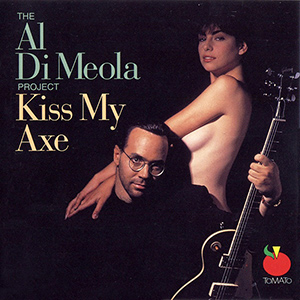
The Embrace, Tomato Records, FLAC 16/44.1.
This CD was my first solo exposure to Al Di Meola. I loved what I heard and was soon working my way through his back catalogue. This track features a ton of both acoustic and electronic instrumentation and is a good test for any headphone to reveal if it favors any particular part of the audio band.
On a good set of speakers, this song will sound balanced and nicely layered overall and it is peppered with the periodic hit of an almost subterranean bass drum. I have used this track as a demo for subwoofers to shake the room on occasion. In most cases headphones will either flatten this track right out, robbing it and those drum hits of much of their depth and texture, or some will over emphasize the drums and throw the balance off for the rest the of the song. The NAD VISO HP70 walked a fine tightrope. It was able to successfully play this track, and have it sound very much as it does on my reference home speakers. It had great overall detail, dimension and balance along with the head shaking bass drum hits that I was waiting for.

Chinatown Calculation, Division1 Entertainment, FLAC 16/44.1.
Doug and the Slugs was a Canadian band that I enjoyed very much in my high school years, listening to them mostly over crappy AM radio or watching their videos on the local weekend music countdown shows.
Slugcology 101 is their greatest hits compilation and beyond having just generally great musicianship, the group performs some pretty tight acapella arrangements too. Chinatown Calculation has a great boogie-woogie vibe to it with a plump and easy to follow bass line that the NADs captured perfectly. This contrasts nicely with the rather sparkling sounding keyboard playing through the whole track. Electric guitar parts had a nice clean crispness to them through the HP70 and frontman Doug Bennett’s signature nasally vocals sounded just right too. Overall, a cleanly recorded and fun sounding song that the NAD VISO HP70 do proper justice to, top to bottom.

Blow Up, Three Blind Mice Records, FLAC 16/44.1.
Blow Up is a classic Japanese jazz album from 1977 originally on the Three Blind Mice label. The entire album, let alone this song, was used for ages as a demo track at audio shows and still holds up well to this day. The absolute frantic, almost manic, bass and cello plucking just thunders through the the VISO HP70.
It doesn’t sound overblown or bloated but rather powerful and impactful. When the cello switched from plucks to to the bow, the lower octave weight is still there but the string detail from the aggressive playing is very rich and clear. The drum solo midway through the track sounds nicely weighted, potent and sharp with good skin and cymbal detail coming through the NAD headphones. The piano solo rounds out the track with a nice ringing quality to the notes and great decay that the HP70 keeps well separated from the potentially overwhelming bass work.

Rikki Don’t Lose That Number, MCA Records, FLAC 16/44.1.
Personally, I love all of Steely Dan’s albums, but I think this may be one of their best recorded classic ones. At least it is to my ears. The opening percussion work (a type of marimba) that segues into the piano intro is rendered with a good amount of body and heft through the VISO HP70. Usually this bit tends to sound a little flatter through most headphones.
On good speakers the weight and dimensionality are there on this musical detail and the HP70 carry that through successfully. The piano has great body and weight to its playing throughout the song and the kick drum feels punchy and sounds plenty real with these headphones. Not to lose anything to the lower octaves, the crispness in the acoustic guitar strings that also play in the opening (performed by Dean Parks), shine right through. The chimes that punctuate the song at key parts have lovely shimmer to them and the drum cymbals on this track sound as realistic as I have probably ever heard them on a comparable recording. Donald Fagan and Tim Schmit’s lead and backing vocals sound clear and dimensional with a good amount of separation as well.
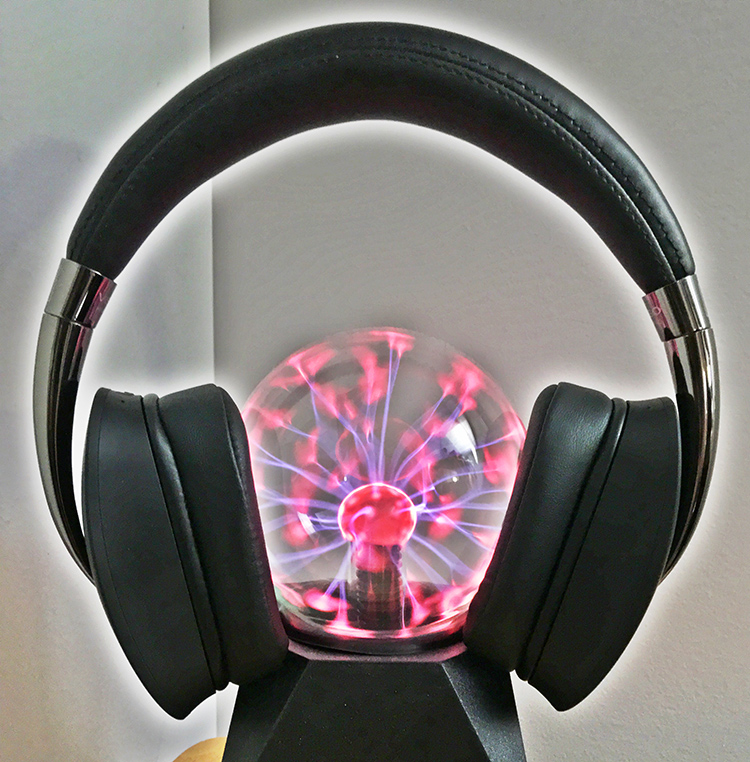
It’s Electric…
The NAD VISO HP70 are a stylish, great sounding and effective audio companion, whether for daily use or for travel.
- High quality sound either wireless or wired
- Effective noise cancellation technology
- RoomFeel is the real deal
- Clean, modern design
- User replaceable battery
- Same dual analog jacks as the PSB model
The NAD VISO HP70 Wireless Noise Cancelling Headphones turn out to be an excellent choice if you are in the market for such a product and you are looking for something different than the usual suspects. Their sonic and noise cancelling performance is certainly on par with its sister PSB model. The NAD VISO HP70 may actually suit you better if you are more “cranially endowed” or even have slightly larger ears. And, like the PSB M4U 8, the RoomFeel tuning makes a significant difference in the subjective sound quality of these cans. They sound bigger and better in every way, with bass performance that is impactful without overwhelming the music’s finer details or tilting the overall sonic balance. Indeed, the choice between these or the PSB version will come down to aesthetics and comfort. If at all possible, I would recommend trying both out to see which better fits your preferences. Either way you can’t go wrong with the sound. Recommended!


